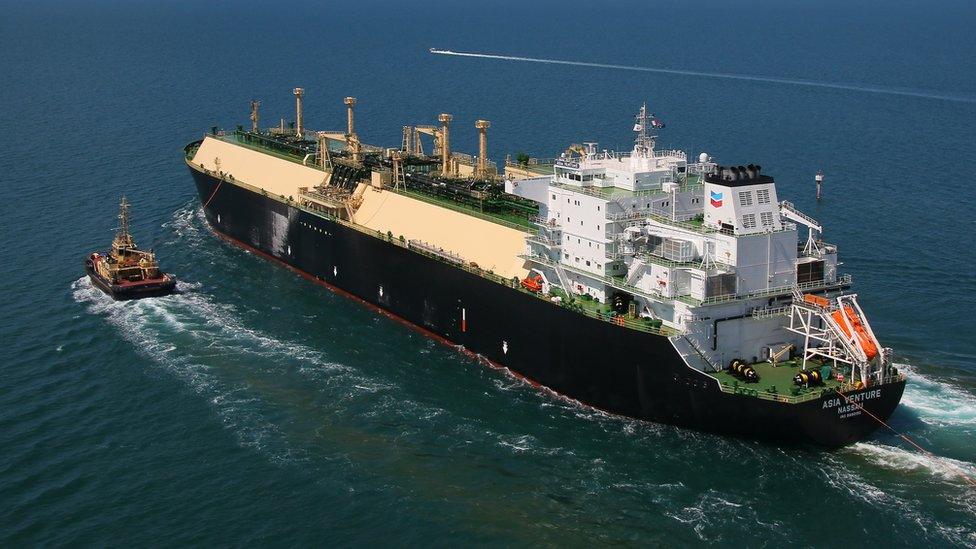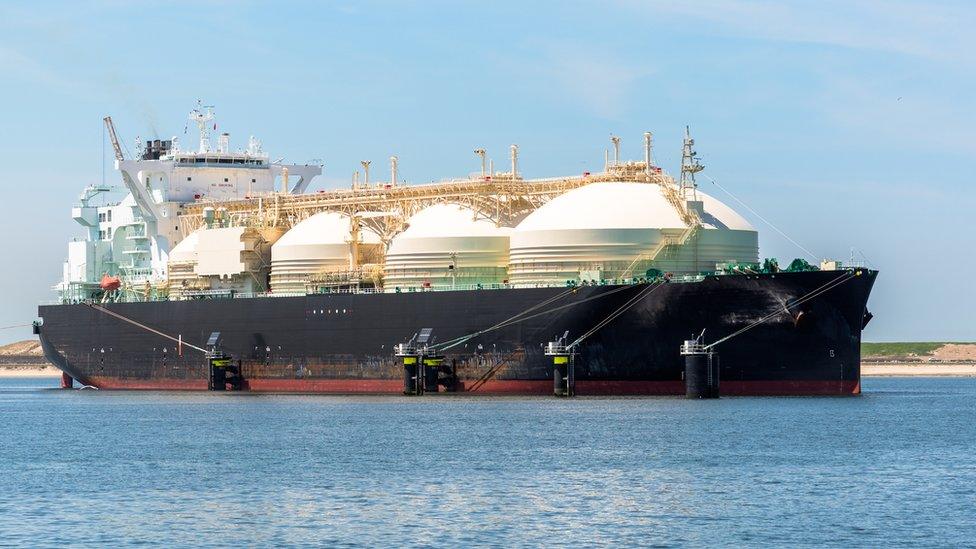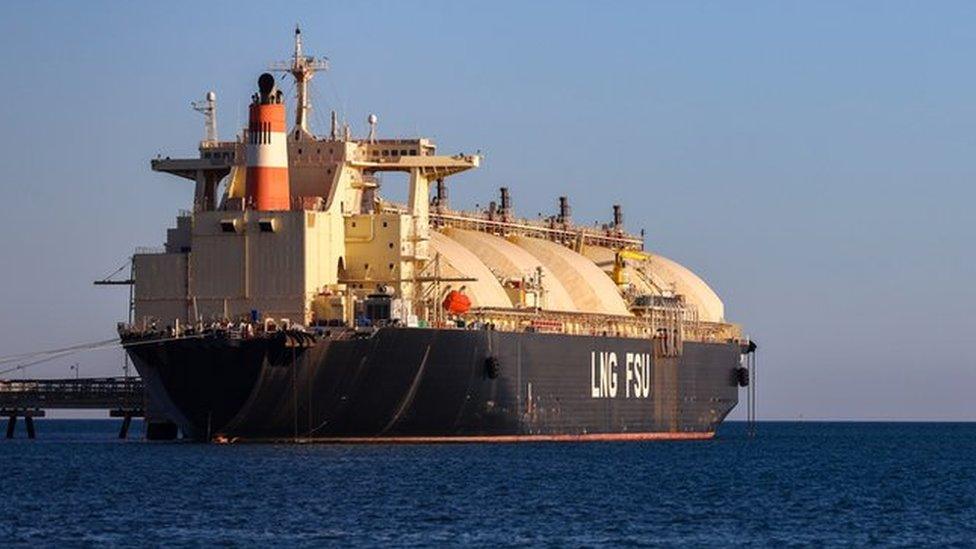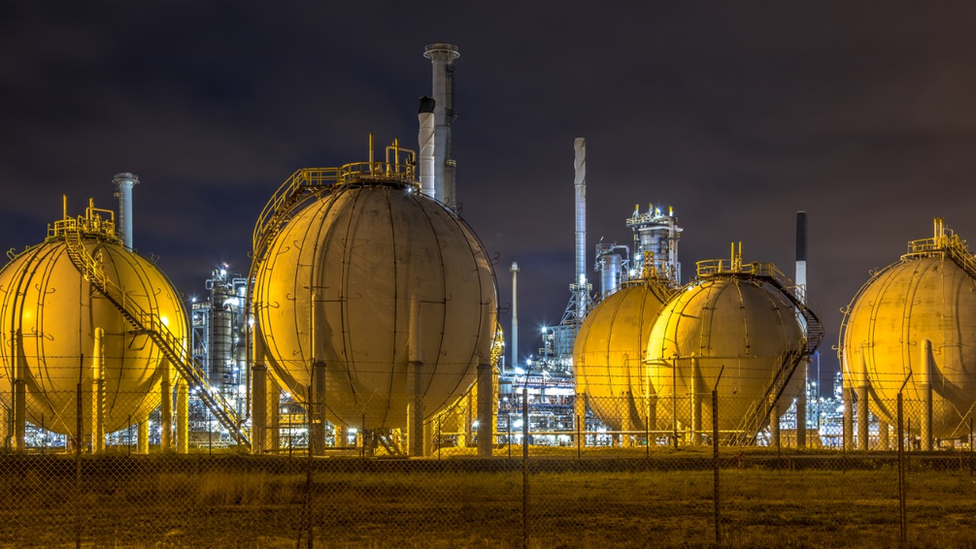Chevron: Workers at major Australia gas facilities to strike
- Published

Chevron Wheatstone plant in Western Australia supplies liquefied natural gas to global markets
Workers at two large liquefied natural gas (LNG) plants in Australia are set to go on strike from 7 September, in a move that could drive up global prices.
It follows weeks of negotiations with unions over pay and working conditions.
Chevron, the US energy giant which operates the sites, said it would "continue to take steps to maintain safe and reliable operations in the event of disruption at our facilities".
Fears of strikes recently pushed up wholesale gas prices in Europe.
The Wheatstone and Gorgon sites produce more than 5% of the world's LNG and about 500 workers are currently employed at the two plants in Western Australia.
The industrial action will see workers down tools for up to 11 hours a day, according to a strike plan seen by the BBC.
"While we don't believe that industrial action is necessary for agreement to be reached, we recognise employees have the right to take protected industrial action," Chevron said in a statement on Tuesday.
It added that it would "continue to work through the bargaining process as we seek outcomes that are in the interests of both employees and the company."
The Offshore Alliance - which is a partnership of two unions representing energy workers, including those at Chevron - said it had been trying to reach an agreement with the company on "several key" issues including pay, job security, rosters and training standards.
It added that workers had been "consistently disappointed with the company's approach to negotiations with the union and Chevron not accepting that an industry standard agreement should apply to the work they perform for the company".
Energy analyst Saul Kavonic said he currently expects the strike to have a limited impact on global gas prices.
However, he warned that energy prices could surge if the industrial action was stepped up.
"In the very unlikely event of a prolonged large scale supply disruption, prices could head back towards crisis levels witnessed last year," he added.
Samantha Dart, senior energy analyst at Goldman Sachs, recently told the BBC: "The problem is these facilities in Australia that produce liquefied natural gas, they are supplying the whole of Asia.
"When Asia doesn't have enough of it, they come and buy from the Atlantic Basin so LNG that would otherwise just be delivered to Europe go to Asia because of that higher competition for supply."
Russia's invasion of Ukraine last year sent oil and gas prices soaring, leading to a sharp rise in energy bills for homes and businesses.
Last week, wholesale gas prices in Europe jumped on concerns of a disruption to supply at Chevron and another Australian LNG plant, run by Woodside Energy.
On Thursday, Woodside said it had reached an agreement in principle with unions representing workers at its North West Shelf plant.
Together, the Woodside and Chevron plants make up around 10% of the world's supply of LNG.

Russia slashed supplies of natural gas to Europe after the start of the Ukraine war in 2022.
That pushed up prices around the world and led countries to seek out alternative sources of energy, such as LNG.
Australia is one of the world's biggest LNG exporters and its supplies have helped to cool global energy prices.
LNG is methane, or methane mixed with ethane, cleansed of impurities and cooled to approximately -160C.
This turns the gas into a liquid and it can then be shipped in pressurised tankers.
At its destination, LNG is turned back into gas and used, like any other natural gas, for heating, cooking and power.
Related topics
- Published25 August 2023

- Published24 August 2023

- Published21 August 2023

- Published18 August 2023

- Published16 November 2022
